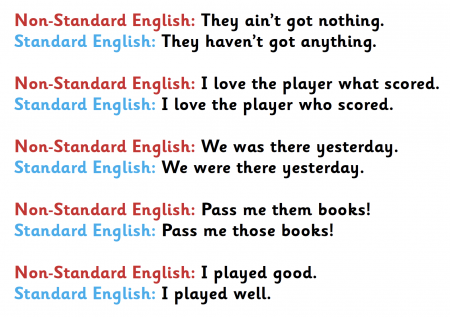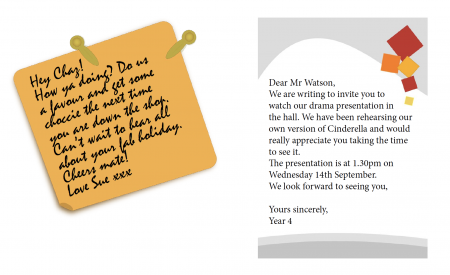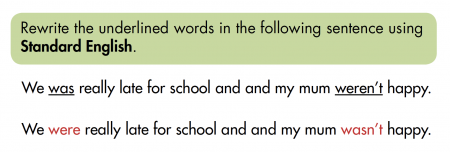When Does One LEARN and Practice Standard English?
BASICS: What is Standard English?
Using Standard English...
Standard English is the variety of English which is used, with minor regional and national variations, as a world language.
The aim of the national curriculum is that everyone should be able to use Standard English as needed in writing and in relatively formal speaking.
Standard English may also be referred to as 'correct' English. It follows grammatical rules like subject-verb agreement and the correct use of verb tenses or pronouns, for example:

Primary-school grammar: Standard and non-Standard English
(In general, the) curriculum states that in Kindergarten: 'pupils should begin to use some of the distinctive features of Standard English in their writing'. It also states that 'Reading and listening to whole books... helps pupils to increase their vocabulary and grammatical knowledge, including their knowledge of the vocabulary and grammar of Standard English.'
In Years 3 and 4 children are taught some of the differences between Standard English and non-Standard English and begin to apply what they have learned in their writing.
Children may also learn about formal and informal language at school. They may be asked to think about the difference between writing a note for a friend and a letter to their headteacher, for example:

Children may be asked to look at these two texts and discuss how they differ.
- The note uses shortened words with 'incorrect' spelling: 'ya', 'choccie' and 'fab'. It includes slang words and phrases: 'do us a favour' and 'cheers'. The writer signs off with an informal 'love' and adds kisses at the end.
- The letter on the right is written in Standard or formal English. The spelling, grammar, and punctuation are all correct. The letter starts and ends formally, with 'Dear' and 'Yours sincerely'. No slang is used at all.
Are children tested on their understanding of Standard English?
(Yearly, students are tested on Standard English and) they may be asked to choose the correct word to put in a sentence so that it is written in Standard English, for example:

They might also be asked to rewrite sentences using more formal language.
Teachers will encourage the use of Standard English throughout a child's time (in) school by reading information and fiction books out loud, modeling writing on the board, speaking in Standard English and highlighting any uses of non-Standard English in their marking of each child's writing.
Register in language
The use of "formal" and Standard English also reflects a particular register or style of speaking and writing.
We use different registers when speaking to different audiences or in different contexts; different registers have different vocabulary (for example the words used by doctors or lawyers when speaking about their area of expertise) and are also more or less formal.
Content available for educational purposes only.

No comments:
Post a Comment
Note: Only a member of this blog may post a comment.